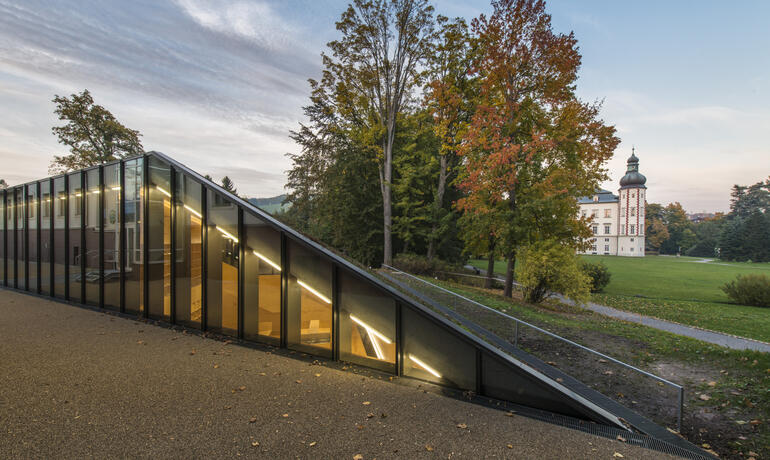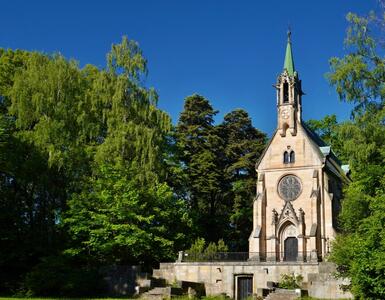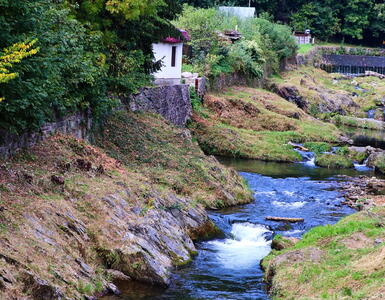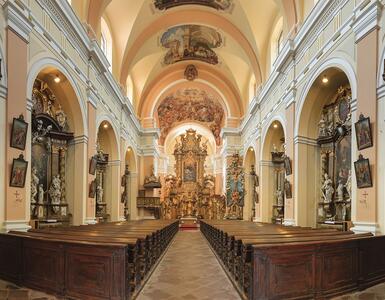From Horse-drawn Carts to Automobiles
The history of automobile production in Vrchlabi goes back to 1864, when the Petera car body factory began to manufacture horse-drawn carts and saddler products. The same factory made its fi rst automobile body in 1908. After 1945 it was incorporated into AZNP Mlada Boleslav, a state enterprise. Cars have therefore been produced in Vrchlabi for over 100 years. You can visit the places which are linked to this.
T.G. Masaryk Square and the Baroque townhall
Dating back to 1737, the building is now used by the town council and the information centre.
House with Seven Gables

One of the oldest private houses in Vrchlabi, it looks like a rural chalet adapted to life in the town.
House no. 100
This house was built at the end of the 19th century by the Petera automobile body factory. Its facade features artefacts from saddler and automobile body production. The building contained employee apartments, offices, workshops in the yard and the company shop on the ground floor.
Zamecek House

The building called Zamecek (The Chateau) was originally the first paper mill in Vrchlabi.
Skoda Auto factory in Vrchlabi
Car bodies for Skoda were produced in this plant from the 1920s. The plant became part of the Mlada Boleslav car factory in 1946 when serial production of whole automobiles was launched. Since 2012, the plant in Vrchlabi has been producing highly sophisticated automatic transmissions for the whole Volkswagen concern.
Karel Halir Primary Art School
The school is located in the former villa of Vrchlabi entrepreneur Petera, who had it built in 1932 during his company’s heyday in the interwar period.
Palace

The Renaissance palace which replaced the former Gothic moated fort was completed in 1546 as the seat of Krystof Gendorf of Gendorf. An unknown architect used the layout of an Italian castello (small fortress or stronghold). The building, originally surrounded by a 12m wide moat and accessible by three bridges.
KRTEK – Krkonose Centre for Environmental Education

The Krkonose Centre for Environmental Education, nicknamed Krtek (“the Mole”), was built following a unique architectural design by architect Petr Hajek in 2014.
Monastery and Monastery Garden
The Baroque monastery, established in 1705, is the seat of the Krkonose Museum’s permanent exhibitions on nature and history. The monastery includes the Church of St. Augustine, which is freely accessible during summer. The newly reconstructed monastery garden is a pleasant place for a walk. You can see an open-air geological exhibition, herb flowerbed, fruit trees and flowerbeds with typical Krkonose flora.
Church of St. Lawrence

This church was built in the Neo-Gothic style by a local builder, Eduard Zirm, on the site of a 14th century single-nave Gothic church, following a project by architect Stephan Tragl of Prague. The construction took place in 1886–1889.






